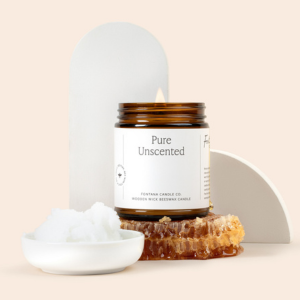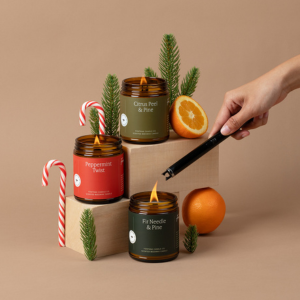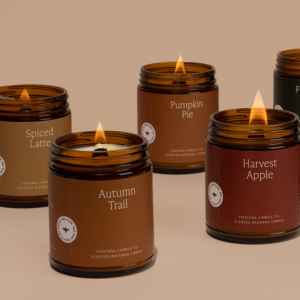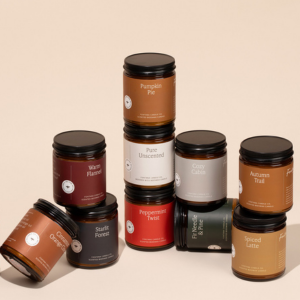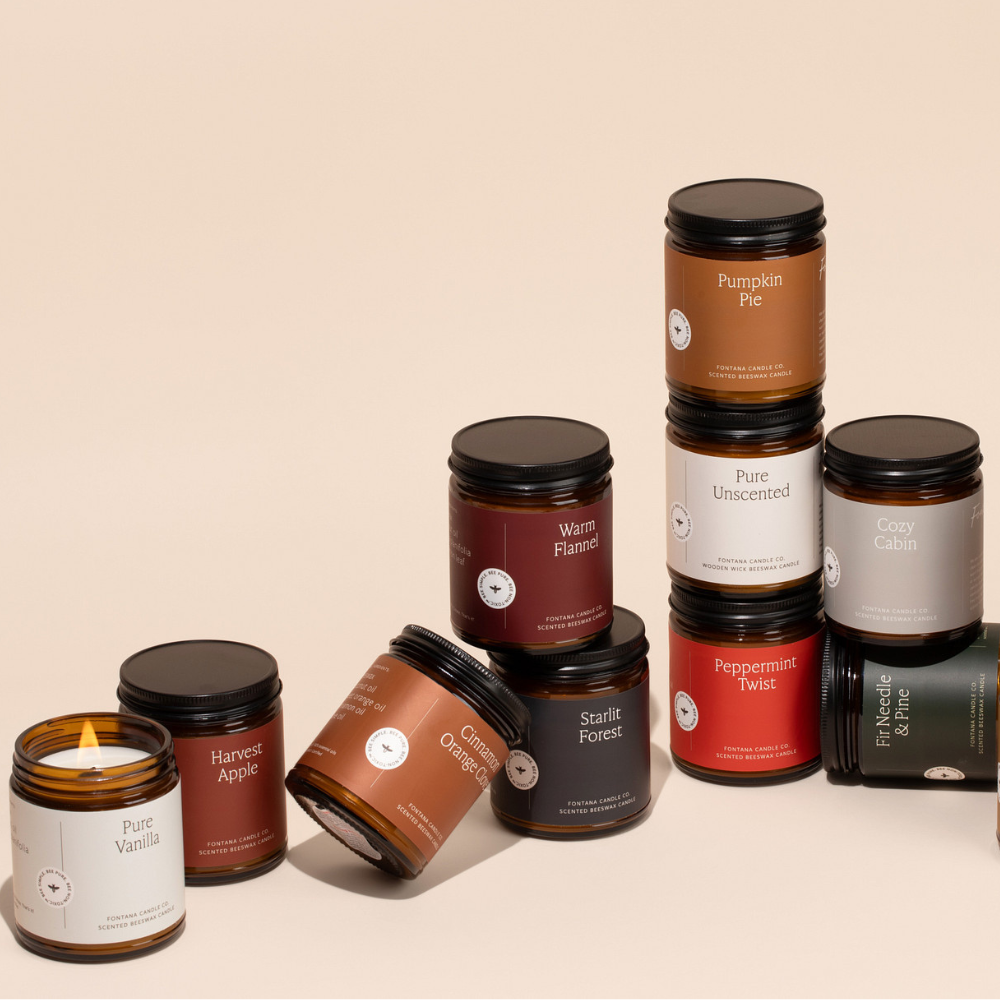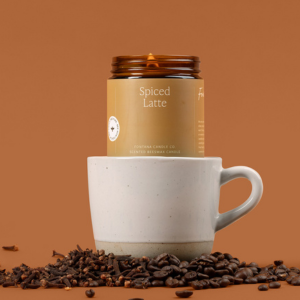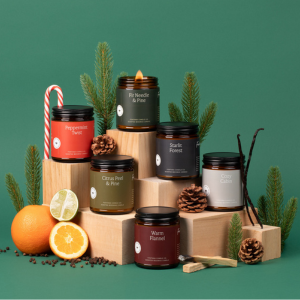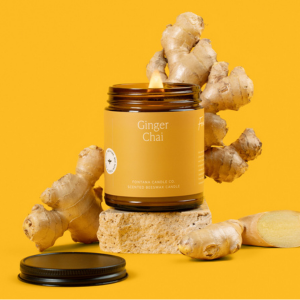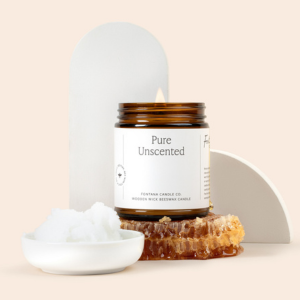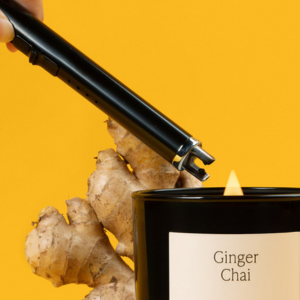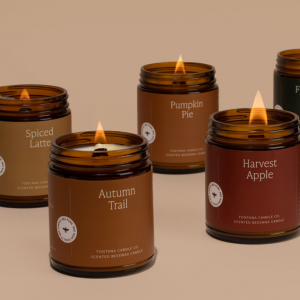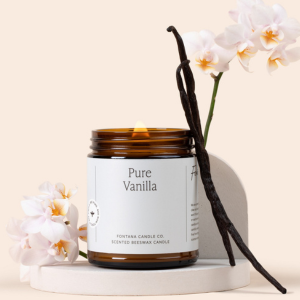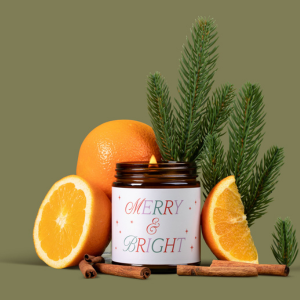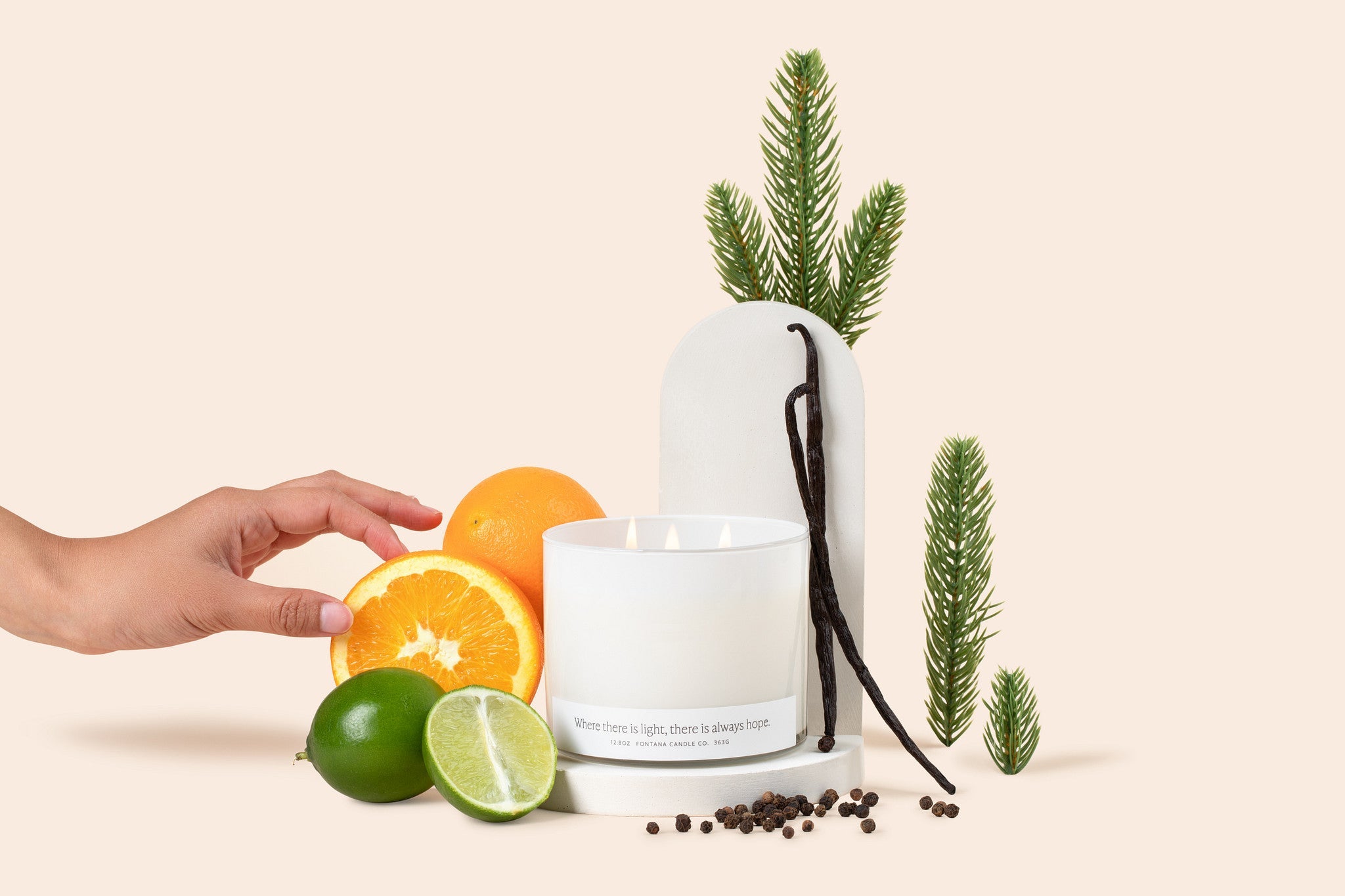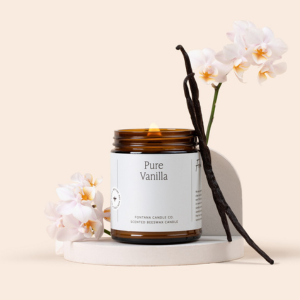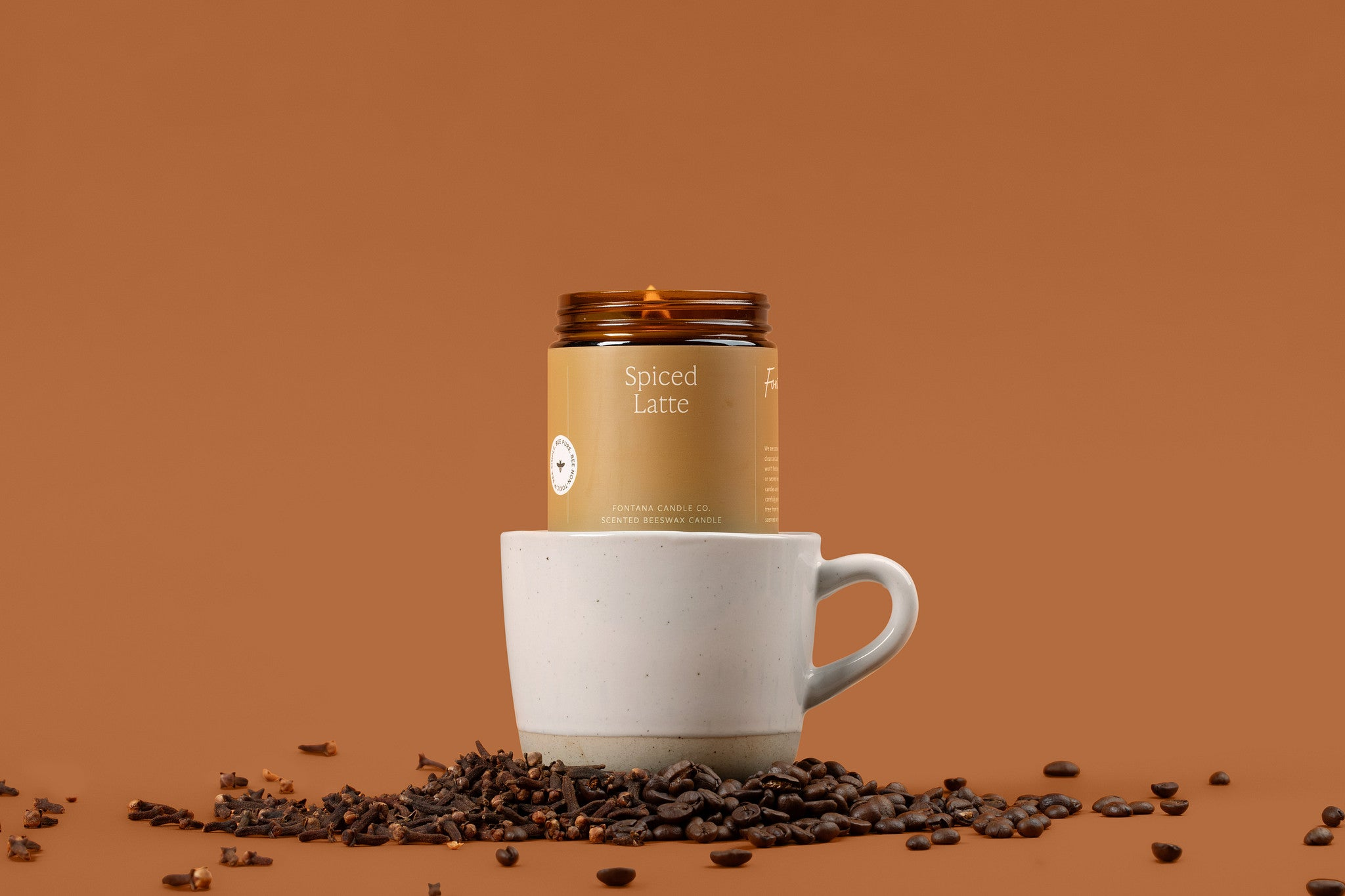What's Really In My Favorite Holiday Candles?

When you love the holidays as much as we do, it is easy to get caught up in the conventional holiday candle craze. We know a holiday candle makes a quick and easy gift for just about anyone on your list!
But we want you to think again when it comes to gifting that Mistletoe candle.
Are holiday candles safe for your family and friends? Unfortunately, like most traditional candles, holiday candles can contain potentially harmful toxins. We want to give you the rare opportunity to take a look at the ingredient list, so you can decide for yourself if it is something you want the special people in your life to inhale. We're also sharing some tips to help you find a truly non-toxic holiday candle.

Want to take a rare look at what is actually in those holiday scented candles?
Why haven’t you been able to take a peek at the ingredients in most candles? Unfortunately, components that go into giving a candle or any scented product its unique smell are considered a trade secret under the Fair Packaging and Labeling Act of 1966, manufacturers do not have to disclose the fragrance ingredients.
Nonetheless, many candlemakers rely on synthetic fragrance oils from large suppliers for their products. These fragrances often contain chemicals which are harmful for your health. While candlemakers may not disclose this information to their customers, fragrance suppliers are required by OSHA to provide Safety Data Sheets for their ingredients. The data sheets can tell us a lot about the safety of many ingredients.
The Safety of Holiday Fragrance Oil Ingredients?
Safety Data Sheets (SDS), also known as the MSDS (Material Safety Data Sheet), includes the properties of each chemical; physical, health, and environmental health hazards of the chemicals; protective measures; and safety procedures for storing and working with the chemicals.
OSHA regulations require laboratories, facilities or shops that use chemicals to have an SDS that is specific to each chemical used in the workplace. They also require the SDS be readily available during each shift to employees in the work area.
Unfortunately, this important safety information does not make it to the consumer purchasing the final product.

Alpine Balsam Safety Data Sheet
We took a look at the Safety Data Sheet of the Alpine Balsam synthetic fragrance sold by a very major candle ingredient supplier.
We bet you didn’t know that it contains a warning that it is an environmentally hazardous substance.
How the fragrance oil is marketed to you:
This fresh scent’s sparkling champagne and citrus top notes merge with a heart of balsam and cedar before melting into a bed of moss mixed with woodsy pine, juniper, and patchouli.
Note Profile
Top: Champagne, Bergamot
Middle: Balsam, Cedar
Base: Pine, Juniper, Moss, Patchouli
The Safety Data Sheet that the end consumer (You!) never get to see, tells a different story.
Contains following warnings:
Combustible liquid. Causes skin irritation. May cause an allergic skin reaction. Causes serious eye irritation.
Prevention Statement:
Wash face, hands and any exposed skin thoroughly after handling. Wear protective gloves/protective clothing/eye protection/face protection. Avoid breathing dust/fume/gas/mist/vapors/spray. Contaminated work clothing should not be allowed out of the workplace.
Mixtures have not been tested for health hazards.
During fire, gases hazardous to health may be formed. Do not allow run-off from fire fighting to enter drains or water courses.
Do not allow it to enter into soil/subsoil. Do not allow it to enter into surface water or drains. Dispose of in accordance with local regulations. Local authorities should be advised if significant spillage cannot be contained.

And finally, we get to the disclosed ingredients:
- Isobornyl acetate
- 2-acetyl-1,2,3,4,5,6,7,8-octahydro-2,3,8,8-tetra-methylnaphtalene (main isomer)
- 2-tert-Butylcyclohexyl acetate
- Linalool
- Linalyl acetate
- Dihydromyrcenol
- 4-tert-Butyl cyclohexyl acetate
- alpha-Methylbenzyl acetate
- 2,4-dimethylcyclohex-3-ene-1-carbaldehyde*
- Methyl 2,4-dihydroxy-3,6-dimethylbenzoate
- Geraniol
- Cinnamaldehyde
You have to have a chemistry degree to understand these ingredients, but here are some of our favorite takeaways:
- 2,4-dimethylcyclohex-3-ene-1-carbaldehyde: According to PubChem, this “chemical has met Safer Choice Criteria for its functional ingredient-class, but has some hazard profile issues.While it is a best-in-class chemical and among the safest available for a particular function, the function fulfilled by the chemical should be considered an area for safer chemistry innovation.”
After taking a look at this ingredient list and subsequent warnings, we would understand if you don’t have the same festive feeling about your Christmas Tree candle.

Peppermint Eucalyptus Safety Data Sheet
But what about fragrance oils that are infused with essential oils?
Unfortunately, not if it is made with fragrance oils.
Let’s take a look at the same candle ingredient supplier’s Peppermint Eucalyptus fragrance. The fragrance is described as a fragrance oil infused with natural essential oils, including eucalyptus oil, cornmint oil, cedarwood oil, and patchouli oil.
How the fragrance oil is marketed to you:
This fragrance oil is infused with natural essential oils, including eucalyptus oil, cornmint oil, cedarwood oil, and patchouli oil.
Note Profile
Top: Eucalyptus, Peppermint
Middle: Cedar, Clove
Base: Patchouli, Vanilla, Powder
The real story of this fragrance oil again lies hidden in the Safety Data Sheet. The data sheet describes the fragrance oil as “dangerous to aquatic life.”
Disclosed Ingredients (at least we recognize some of these!):
- Methyl hydrogenated rosinate
- Linalyl acetate
- Patchouli oil
- Linalool
- alpha Terpineol
- 5-Isopropyl-2-methylphenol
- Isobornyl acetate
- Cedarwood oil, Virginian
- Vanillin
- Eucalyptus oil
- Cassia oil
- Geraniol
- Ethyl vanillin
- Coumarin
- Phenylacetaldehyde dimethyl acetal
- Clove leaf oil
- 2,4-dimethylcyclohex-3-ene-1-carbaldehyde
- N-(5-methylheptan-3-ylidene)hydroxylamine
This fragrance is the perfect example of why we caution to avoid companies that tout their fragrances that are “infused with essential oils.” These manufacturers tend to use a splash of essential oils mixed into their synthetic chemical concoctions. Instead, we recommend companies that use only pure 100% natural essential oils to scent their candles.

Shopping For Non-Toxic Holiday Candles
There are many things to look for when trying to find a truly non-toxic holiday candle. However, here are a few of the most important things to keep in mind while shopping:
- Search for transparent candlemakers. Companies that truly care for the health of their customers will disclose, either on the product itself or their website, the ingredients used in their candles.
- Be sure a candle uses pure essential oils, not synthetic fragrances or “essential oil infused” fragrances. Companies who use pure essential oils will gladly disclose this to their customers. For holiday scents, we recommend essential oil blends containing cinnamon oils, clove oils, peppermint, fraser fir, and others.
- Avoid candles that use traditional paraffin or soy-based waxes. Both traditional and soy candle wax contain harmful petroleum byproducts. Beeswax is a healthy, natural alternative.
- Check the candle wick. While wicks are required to no longer contain lead cores, many candlemakers use paraffin coated cotton wicks. When burnt, these wicks can release trace amounts of harmful byproducts.
- Look for candlemakers with third-party testing and certification that clearly states their products are non-toxic.
The holidays should be a time of happiness and joy among families. Candles are a timeless gift, and many holiday scents are a perfect reminder of past memories. Fortunately, there are many scents that can be easily crafted for holiday enjoyment with safe, pure essential oils.
Take extra time this holiday season to find a candlemaker that cares about the health and safety of their customers, so you can rest assured knowing the candles you’re giving as gifts or using to scent your home are free from toxins.
Fontana Candle Company for 100% Natural Holiday Scents
Luckily for us, holiday scents can be easily crafted for holiday enjoyment with pure essential oils. We highly recommend essential oil blends containing cinnamon oils, clove oils, peppermint, fraser fir, and others like juniper berry, balsam, and frankincense.
Until candles and air fresheners are required to have their ingredients disclosed on their labels, the only way to play it safe is with pure essential oils, and with companies that are independently certified as safe and nontoxic through third party verifications like MADE SAFE® and EWG Verified.
At Fontana Candle, we believe the air you breathe should be as safe as the food you eat and the water you drink. That’s why we’ve made it our mission to create truly non-toxic, clean burning candles. We've carefully selected all of the ingredients in our candles and only work with trusted suppliers. Our candles are simple: they're made from hand-poured beeswax and coconut oil, 100% pure essential oils, and wooden wicks. No synthetic fragrances, no petroleum byproducts, and no toxins. Better yet, Fontana candles are the first to be MADE SAFE® certified!
Shop our collection of non-toxic winter holiday candles and essential oil blends to find the perfect scent for your home or gift for a loved one!

